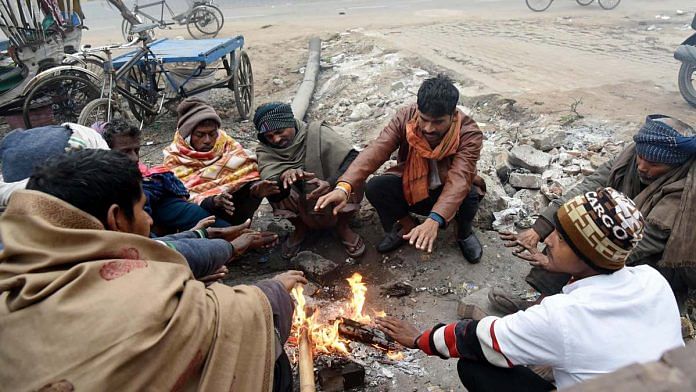New Delhi: It might be time to bring out your heavy-duty woollens, with the India Meteorological Department head predicting a colder-than-usual winter this year.
The prediction is based on a weather pattern that takes shape over the distant Pacific Ocean, its effects affecting the world at large.
IMD Director General of Meteorology Mrutyunjay Mohapatra attributed his prediction to the emergence of weak La Niña conditions over the Pacific Ocean.
La Niña (Spanish for little girl, pronounced ‘la-neen-yuh’) is one part of the El Niño-Southern Oscillation (ENSO) cycle, a complex phenomenon that takes place over the Pacific Ocean with wide-ranging ramifications for global weather. The other part of this cycle is El Niño (Spanish for little boy, pronounced el-neen-yoh), whose effects are the absolute opposite of La Niña’s.
To understand how the two patterns work, it helps to keep in mind the geography of the Pacific Ocean, which is bordered by the Americas to its east, and Asia and Australia to the west.
Also Read: More floods, severe heatwaves: Govt predicts climate change impact on India this century
‘Intermittent cold waves’
The ENSO is an irregular periodic variation in the surface temperature of the water and winds over the Pacific Ocean. Aside from the sea-surface temperature of the Pacific Ocean, the ENSO has an impact on rainfall, temperature and wind patterns across the world.
While La Niña is referred to as the cold phase of ENSO, El Niño is the warm phase of ENSO. Both La Niña and El Niño are deviations from the normal surface temperatures of the Pacific Ocean.
Under La Niña conditions, winds blow the warm surface water of the Pacific Ocean westwards on the ocean’s surface from South America to Indonesia. As the warm water moves, the cold water rises to the surface, which causes water in the eastern Pacific to be colder than normal.
Climate-wise, in a La Niña year, winds blow much stronger during the winter, which makes the water near the equator a few degrees colder than normal. This change in the ocean’s temperature impacts the weather across the world.
It has been reported that La Niña results in heavy or better monsoon rains in India, droughts in Peru and Ecuador, heavy floods in Australia, and high temperatures in the Indian Ocean and Western Pacific.
Explaining the impact of La Niña on this year’s winter, Professor A.P. Dimri from the School of Environmental Sciences at Jawaharlal Nehru University said it would translate into intermittent waves of extremely cold weather, instead of a dip in temperatures throughout the season.
La Niña and El Niño usually last between 9 and 12 months. While their frequency is fairly irregular, they take place every two to seven years. Typically, El Niño occurs more frequently than La Niña.
Also Read: Distant Atlantic Ocean key to accurate Indian monsoon prediction in warming world: Study
Impact of La Niña in India
Talking about the impact of La Niña on India, Raghu Murtugdde, a climate scientist at the University of Maryland, US, was quoted by Down To Earth as saying that the rare episodes of “frost in Mahabaleshwar” and “cold waves in hilly parts of Tamil Nadu and so on” can be associated with a La Niña.
“A La Niña can affect India’s winter. As you know, the winds during the winter are from the northeast near the land surface and this is accompanied by a so-called Southwesterly Jet in the upper atmosphere. During an El Niño, this jet is pushed southward and this allows more western disturbance to bring rain and snow into northwestern India. But a La Niña actually produces a more north-south low pressure system which brings in Siberian air and the cold wave can extend much further south,” he said.
Also Read: Severe cold in warm winter, floods in normal monsoon — why IMD gets its forecasts so wrong



